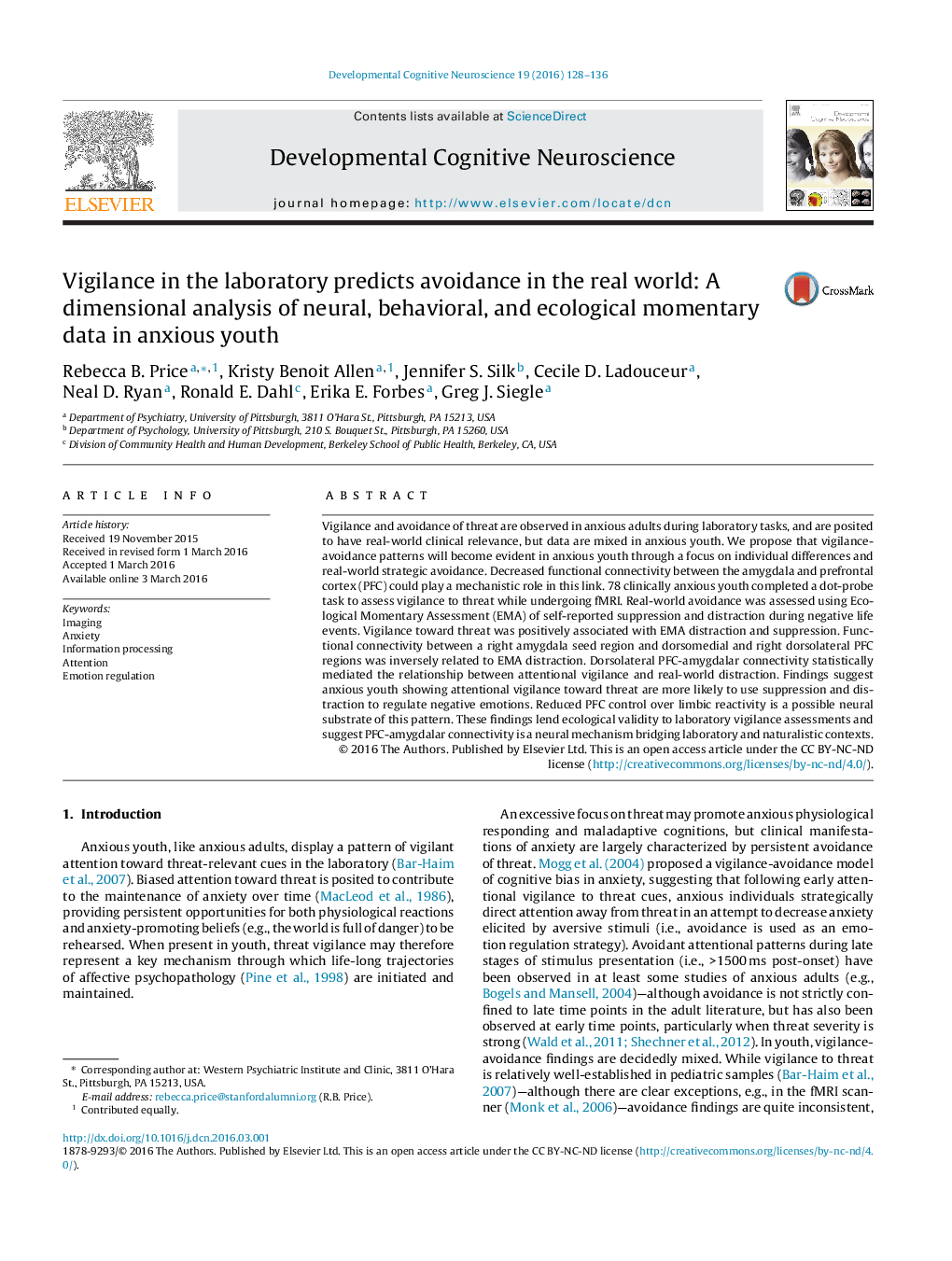| Article ID | Journal | Published Year | Pages | File Type |
|---|---|---|---|---|
| 4316443 | Developmental Cognitive Neuroscience | 2016 | 9 Pages |
Vigilance and avoidance of threat are observed in anxious adults during laboratory tasks, and are posited to have real-world clinical relevance, but data are mixed in anxious youth. We propose that vigilance-avoidance patterns will become evident in anxious youth through a focus on individual differences and real-world strategic avoidance. Decreased functional connectivity between the amygdala and prefrontal cortex (PFC) could play a mechanistic role in this link. 78 clinically anxious youth completed a dot-probe task to assess vigilance to threat while undergoing fMRI. Real-world avoidance was assessed using Ecological Momentary Assessment (EMA) of self-reported suppression and distraction during negative life events. Vigilance toward threat was positively associated with EMA distraction and suppression. Functional connectivity between a right amygdala seed region and dorsomedial and right dorsolateral PFC regions was inversely related to EMA distraction. Dorsolateral PFC-amygdalar connectivity statistically mediated the relationship between attentional vigilance and real-world distraction. Findings suggest anxious youth showing attentional vigilance toward threat are more likely to use suppression and distraction to regulate negative emotions. Reduced PFC control over limbic reactivity is a possible neural substrate of this pattern. These findings lend ecological validity to laboratory vigilance assessments and suggest PFC-amygdalar connectivity is a neural mechanism bridging laboratory and naturalistic contexts.
